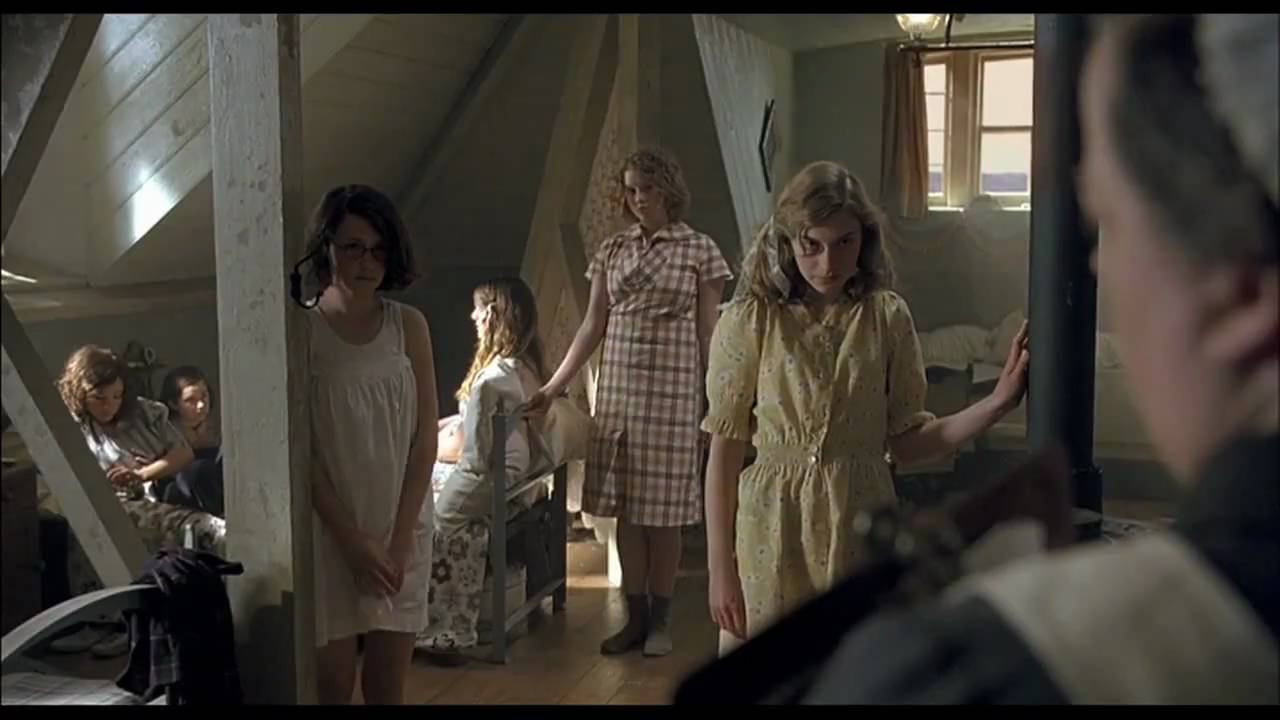By Chlotrudis Independent Film Society
Rating: 3.5 cats
Director: Jordan Scott
Starring: Adele McCann | Ellie Nunn | Eva Green | Imogen Poots | Juno Temple | Maria Valverde

Country: ireland, united_kingdom
Year: 2010
Running time: 104
IMDB: http://www.imdb.com/title/tt1183665/
Chris says: “The arrival of an aristocratic Spaniard student upsets the delicate hierarchy of an elite, remote, all-female 1930s British boarding school. Eva Green stars as a flamboyant, idealistic, controlling teacher. A slightly overcooked directorial debut from Jordan Scott (daughter of Ridley), all this has to recommend it is lovely cinematography (packed with foreboding, nighttime lake shots) and the continuously shifting alliances among the characters in the film’s first two acts. A genuinely shocking twist then arrives, but it doesn’t prevent CRACKS from lapsing into a lesser version of HEAVENLY CREATURES; nor does it dissuade Green from ravenously chewing up the scenery. At least it was the only truly mediocre film I saw at TIFF this year. 2 1/2 cats”
Jason says: “CRACKS looks like a tonier, period version of MEAN GIRLS or HEATHERS, and that’s not a bad way to describe it in one sentence. It’s a bit more clever than that, though, with a different force driving it in addition to mere adolescent jealousy.
“At first, there is a sort of order; Di (June Temple) sets the standard for this girls’ boarding school’s diving team, and is as such the favorite of coach Miss G (Eva Green), who appears to be the school’s youngest and most glamorous instructor. She is told that their team (which also bunks and eats together) will be getting a new member, a Spanish aristocrat’s daughter. Naturally, Fiamma (Maria Valverde) is everything that could threaten her – exotically beautiful, a gymnast who immediately becomes the new star of the team, intelligent, and well-traveled. And what’s worse, although somewhat aloof, she’s not conceited, and the inhaler she wears around her neck for her asthma keeps her humble. Di can’t help but hate her.
“It’s a familiar set-up, and probably was back in 1934, when the film is set. The script (by director Jordan Scott, Ben Court, and Caroline Ip, from a novel by Sheila Kohler), however, does an excellent job of telling us just enough. We actually don’t learn that much about the characters, and the really crucial bit is slipped in without much fanfare. Unlike many films about teenagers, Scott and company place a great deal of focus on how they are still children as opposed to small adults, with Di in particular seeking something akin to a parent’s approval and attention from Miss G. Fiamma isn’t quite the child that Di is, but she still isn’t quite so mature as she seems.
“All three main actresses are excellent. Juno Temple’s Di isn’t the girl you’d necessarily expect to be queen bee, just on appearances; she’s made up to look somewhat plain compared to one or two of the other girls. But she’s got a bit of a mean streak, and Temple does a nice job of moving it closer to the surface as the movie goes on and Fiamma comes more into favor, while also placing a little more desperation into her voice. It’s a finely honed display of petulance.
“Maria Valvarde is given something of a prop – when Fiamma gets stressed, she’s going to have trouble breathing – but that’s fortunately not the entirety of her performance. Fiamma is sort of standoffish, not expecting to be at the school long, and Valarde manages to communicate that she’s used to better things without necessarily seeming to think that she’s better than her classmates. She makes this outsider easy to identify with, but also comes up aces when she is pushed out of that familiar territory, whether it’s striking at her tormentor with precise venom, or a blind panic when things start to get out of control.
“And then there’s Eva Green. I don’t want to say too much about what she does as Miss G, except that Green’s name being first in the credits is not just a matter of seniority or bankability; much more than is typical of this genre, she is central to not just the action but what the film is about. Suffice it to say that she makes it very easy to see why the students would idolize her, but from nearly the beginning, and as the film goes on, we see another side to her that is both dangerous and pitiable.
“Jordan Scott finds a nice tone for the movie, not making too much of situations until they are ready to come to a head, and then not holding back how bad the situation is. The film is also gorgeous, too, with impeccable period detail. Scott and cinematographer John Mathieson do especially nice work in shooting spots where the island meets the water, with the docks emphasizing how isolated the island and school is, while the pond where the team practices diving seems like a sanctuary.
“What puts CRACKS a cut above other jealous teen movies is not just how its story of childhood’s end winds up applying to more than might initially be expected, but how it doesn’t view adulthood as something that limits horizons. For all the tragedy the film features, there is the idea of better things hidden underneath. 4 1/2 cats
“Seen 22 April 2010 at the Somerville Theater #5 (Independent Film Festival of Boston)”
